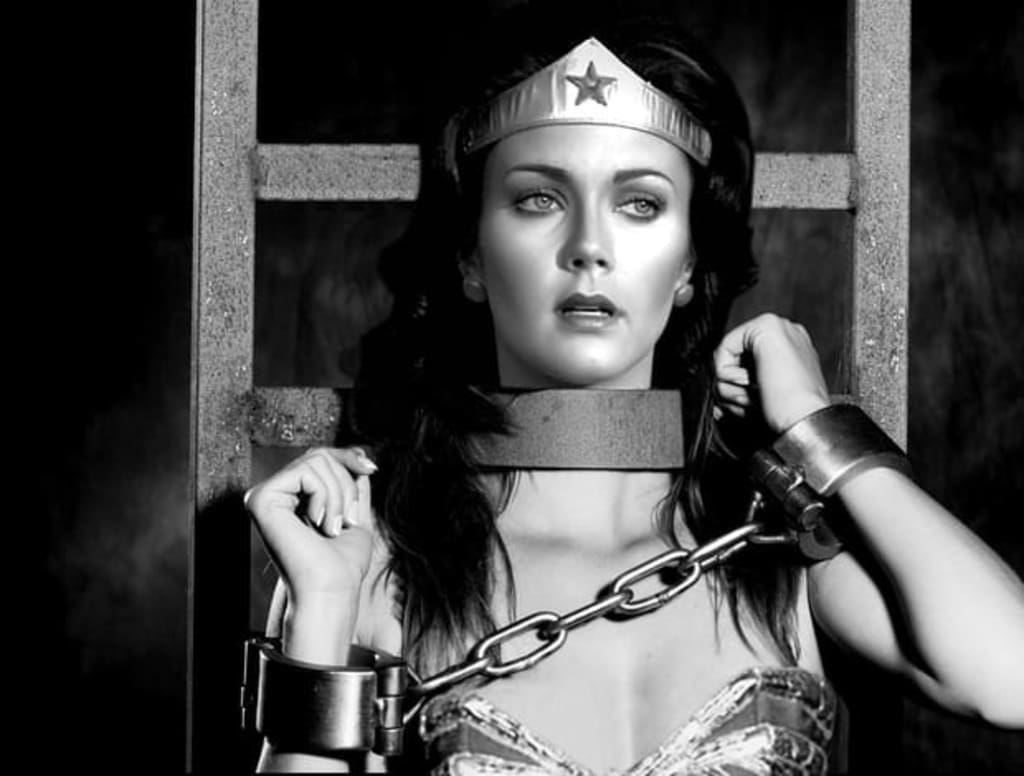
The origin of Wonder Woman is not your typical tale and needs to be told. In today’s society, women’s rights, value, and strengths are rightly accepted to be equal to men. In the 1940s the idea of a strong, confident, sexual woman was not an image readily promoted in society. William Moulton Marston's vision of a new Amazonian comic book character changed all of that with the creation of Wonder Woman.
To Understand Wonder Woman, You Need to Understand The Author
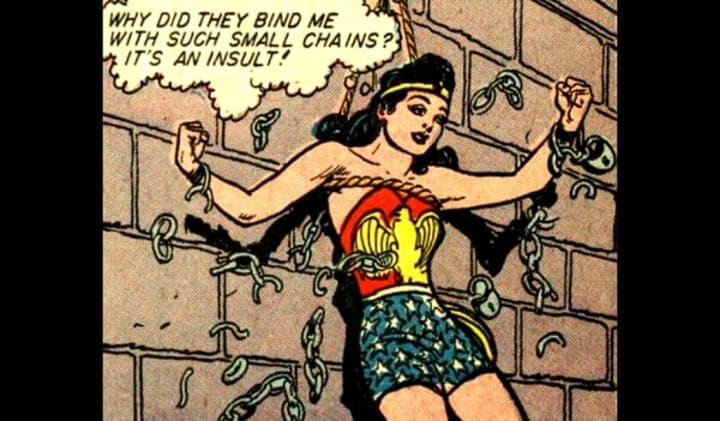
The multitude of influences that formed Wonder Woman starts with her creator, William Moulton Marston. He was an accomplished man in his own right; he was well educated and progressive in his views of the world, a physiologist, professor, scientist, author and inventor. The invention of the Polygraph lie detector test was attributed to Marston, which is said to also have influenced Wonder Woman’s Lasso of Truth.
Marston’s private life would not be considered conventional, even today. He was an advocate for "free love" and had an extended relationship with two women, Elizabeth Holloway and Olive Byrne.
Both Elizabeth and Olive each had two children to Marston, and they all lived happily together as a family. After Marston’s death from cancer in 1947, Elizabeth and Olive remained together for another 30 years, with Elizabeth being the last to die at age 100 (go you good thing).
Olive Byrne’s Mother and her famous feminist aunt, Margaret Sanger, heavily instilled their views on women’s rights to Olive. Marston likewise used Margaret Sanger and other early feminists as inspiration when conceiving who Wonder Woman was to be as a character. He wanted a strong, intelligent, symbol that projected his strong feminist ideals.
Not even girls want to be girls so long as our feminine archetype lacks force, strength, and power. Not wanting to be girls, they don't want to be tender, submissive, peace-loving as good women are. Women's strong qualities have become despised because of their weakness. The obvious remedy is to create a feminine character with all the strength of Superman plus all the allure of a good and beautiful woman.
His template of the ideal woman came from his extended relationships with Elizabeth and Olive. Their forward thinking attitudes, looks, and affiliations to feminist groups such as the suffrage movement, inspired Marston to form his new superhero into the collective manifestation of the strongest woman he knew.
Stories Shall Emphasize The Value Of Home And The Sanctity Of Marriage

It has hard to image today, but early comics were considered to be a corrupting influence on children’s minds with their violent and suggestive content. Imagine bringing a kid back to our time on one of Bill and Ted’s excellent adventures. I am not sure what the butterfly effect would be from a 1940s kid playing Grand Theft Auto, but I am guessing it would not be good!
In 1954, the concern was so great that a senate enquiry was held. One of the main antagonists supporting the condemnation of comic books was Fredric Wertham and his book titled, Seduction of the Innocent. To put it simply, Fredrick Wertham was the 1940s (frigid) equivalent of Donald Trump. His book raised concerns over the violence, nudity and sexual themes portrayed in comics. He especially had trouble understanding the bondage subtext of Wonder Woman, and how such a character could be considered on equal footing as men.
As to the advanced femininity, what are the activities in comic books which women indulge on an equal footing with men? They don’t work. They are not homemakers. They do not bring up a family. Mother-love is entirely absent. Even when Wonder Woman adopts a girl there are Lesbian overtones.
Following the 1954 hearings, the Comics Code Authority was formed and remained in use by DC Comics until 2011. The original version of the code did not permit:
horror, excessive bloodshed, gory or gruesome crimes, depravity, lust, sadism, and masochism.
In direct opposition to Wonder Woman, the code specified that:
Illicit sex relations are neither to be hinted at nor portrayed. Violent love scenes, as well as sexual abnormalities, are unacceptable.
In other words, the code removed all the good stuff that made DC Comics interesting. Fredrick Wertham was later found to have exaggerated his concerns and was proven to be nothing more than a comb-over with a big mouth.
So What Was All The Fuss About Wonder Woman?

The combination of Marston’s personality, lifestyle, and liberated partners culminated into a strong bondage theme in his Wonder Woman comics. The use of chains has consistently been used in the fight for women’s right as a symbol of the restrictive shackles that prevented equal rights and freedoms. In particular, Margaret Sanger regularly depicted imagery of women being held or burdened by chains in her magazine, Birth Control Review. Marston employed these themes to express his view that society needed to change their perceptions of power and love.
The only hope for peace is to teach people who are full of pep and unbound force to enjoy being bound... Only when the control of self by others is more pleasant than the unbound assertion of self in human relationships can we hope for a stable, peaceful human society... Giving to others, being controlled by them, submitting to other people cannot possibly be enjoyable without a strong erotic element.
Why would parents have a problem with their kids reading that? Of course the themes would not have been obvious to children. To adults on the other hand seeing Wonder Woman frequently chained, gagged, tortured and occasionally lassoed was raising more than eyebrows. Marston’s early depiction of Wonder Woman consistently showed physical submission and bondage to arouse eroticism in his readers.

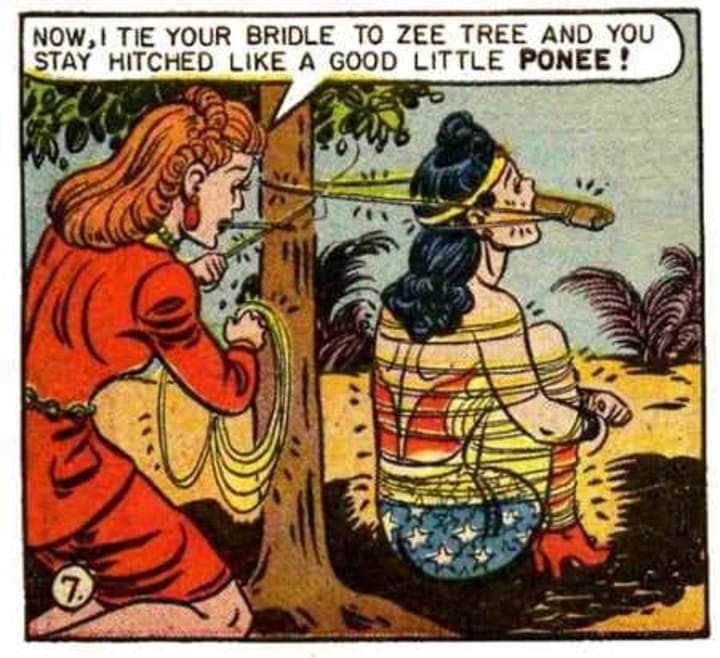
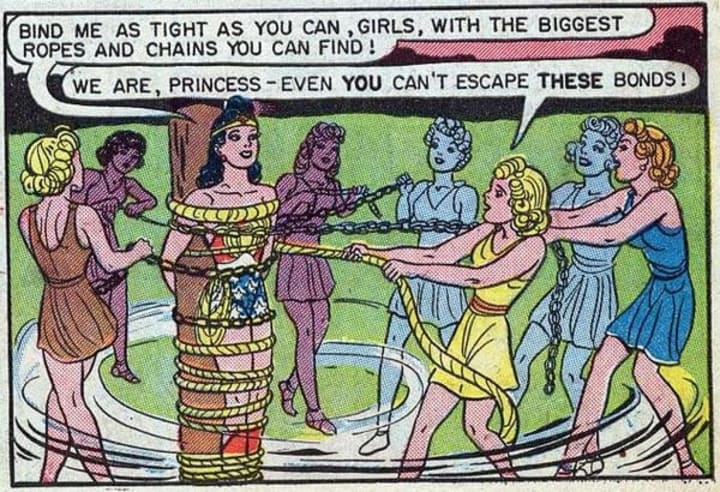
Marston knew what he was doing and never crossed the line from 'sex love training' to real sadism that was morbid or harmful. His training in psychology afforded him the confidence to experiment with how both sexes related to one another. The choice of submissive themes cleverly empowered Wonder Woman to choose her own circumstance, and by doing so prove that the only contest with sex was our own assertive egos.
Wonder Woman Today

The image has changed, but her strength remains
The critical view of the public that the content in publications such as Batman and Superman was too masculine was the catalyst for Marston to express his views and offer his Wonder Woman solution. Little did by Max Gaines know, they had only shifted the criticism and opened the door to a new pivotal superhero in Wonder Woman.
Frankly, Wonder Woman is psychological propaganda for the new type of woman who, I believe, should rule the world.
Over time the bondage themes were removed and the tone of Wonder Woman softened in line with the Comics Code Authority. Regardless of the changes, Wonder Woman’s indestructible bracelets, tiara, blue underpants and red knee-high boots showed her to represent an ideal that has seen her become the longest running female comic character of all time.
With the ever-expanding DC Comics Universe, Wonder Woman is shown to be one of the pillars of the Justice League for good reason. The goal of Marston to grow the power of women is realized now more than ever. People do not give it a second thought that Wonder Woman is of equal measure to her male colleagues, and in many respects, proven to be far superior.
Source: The Secret History of Wonder Woman
About the Creator
Roddy BW
I write about stuff and things

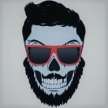




Comments
There are no comments for this story
Be the first to respond and start the conversation.